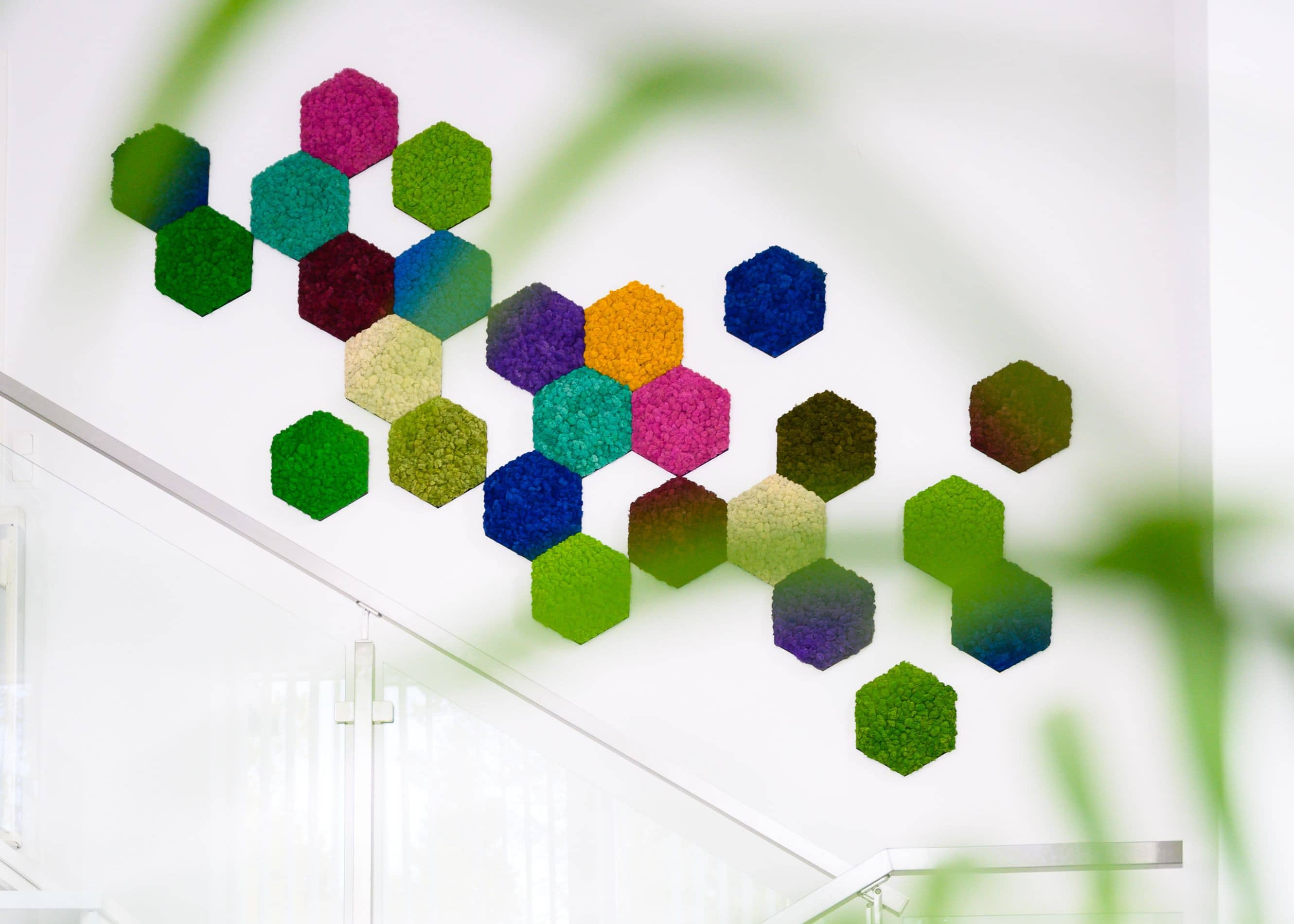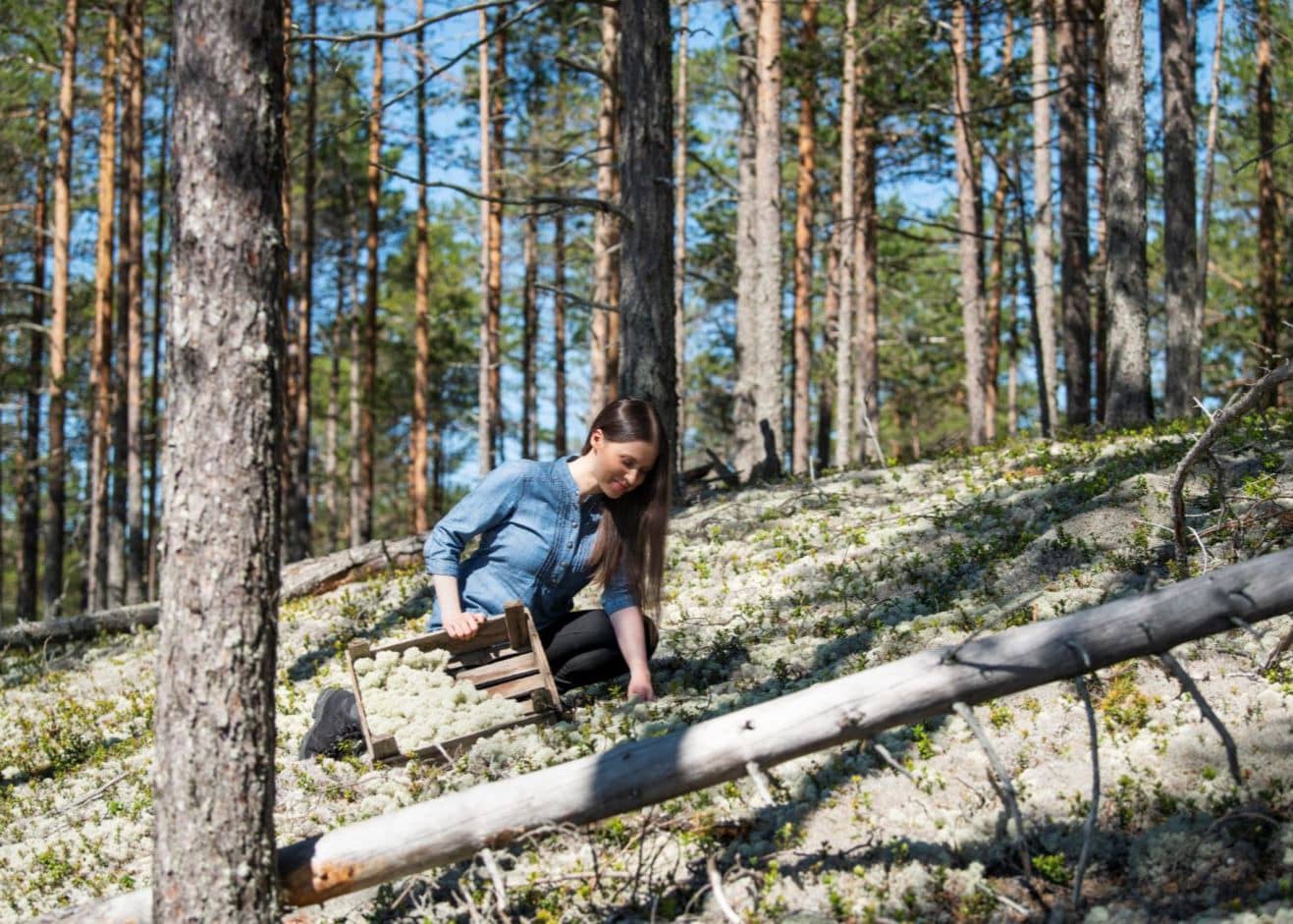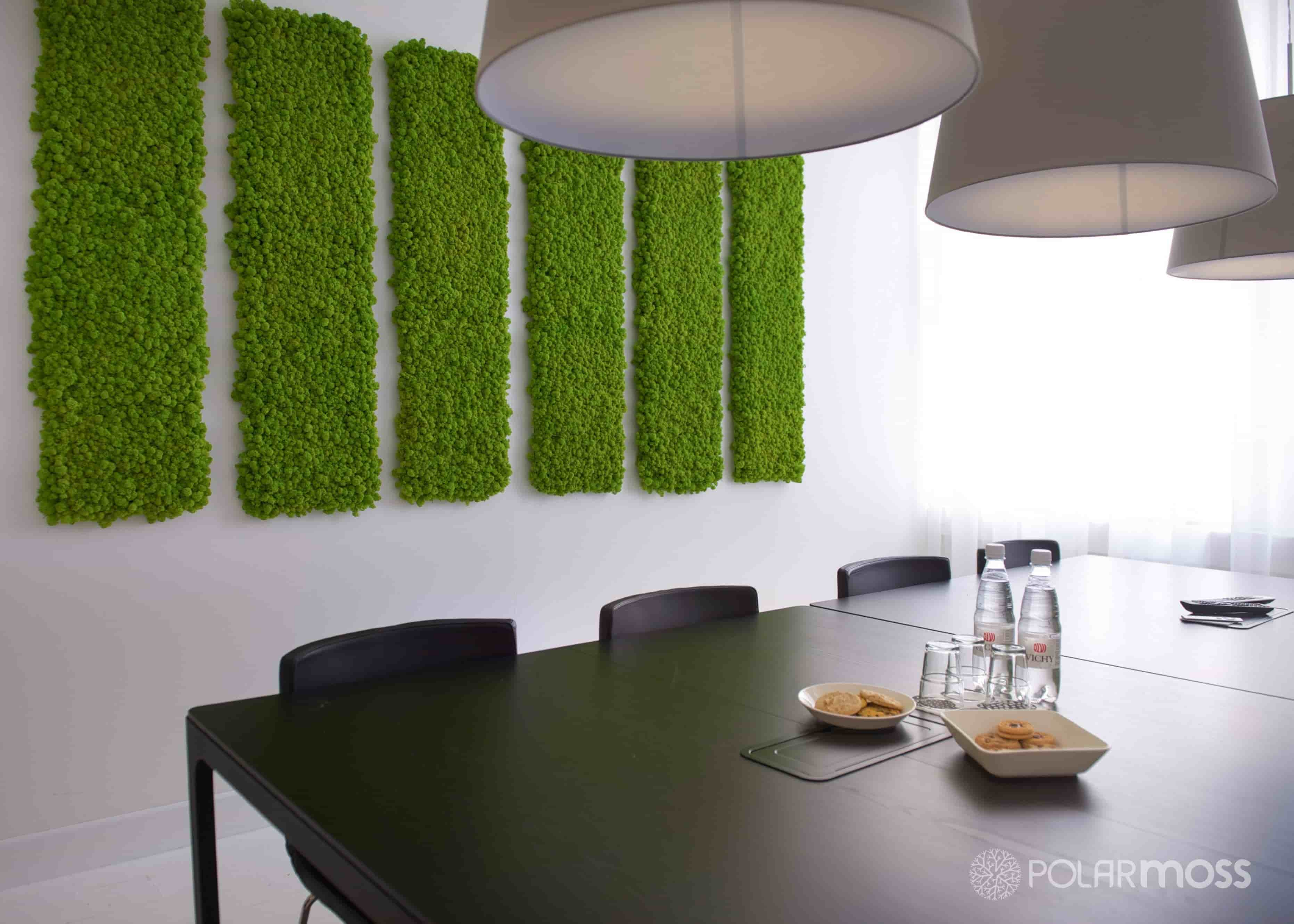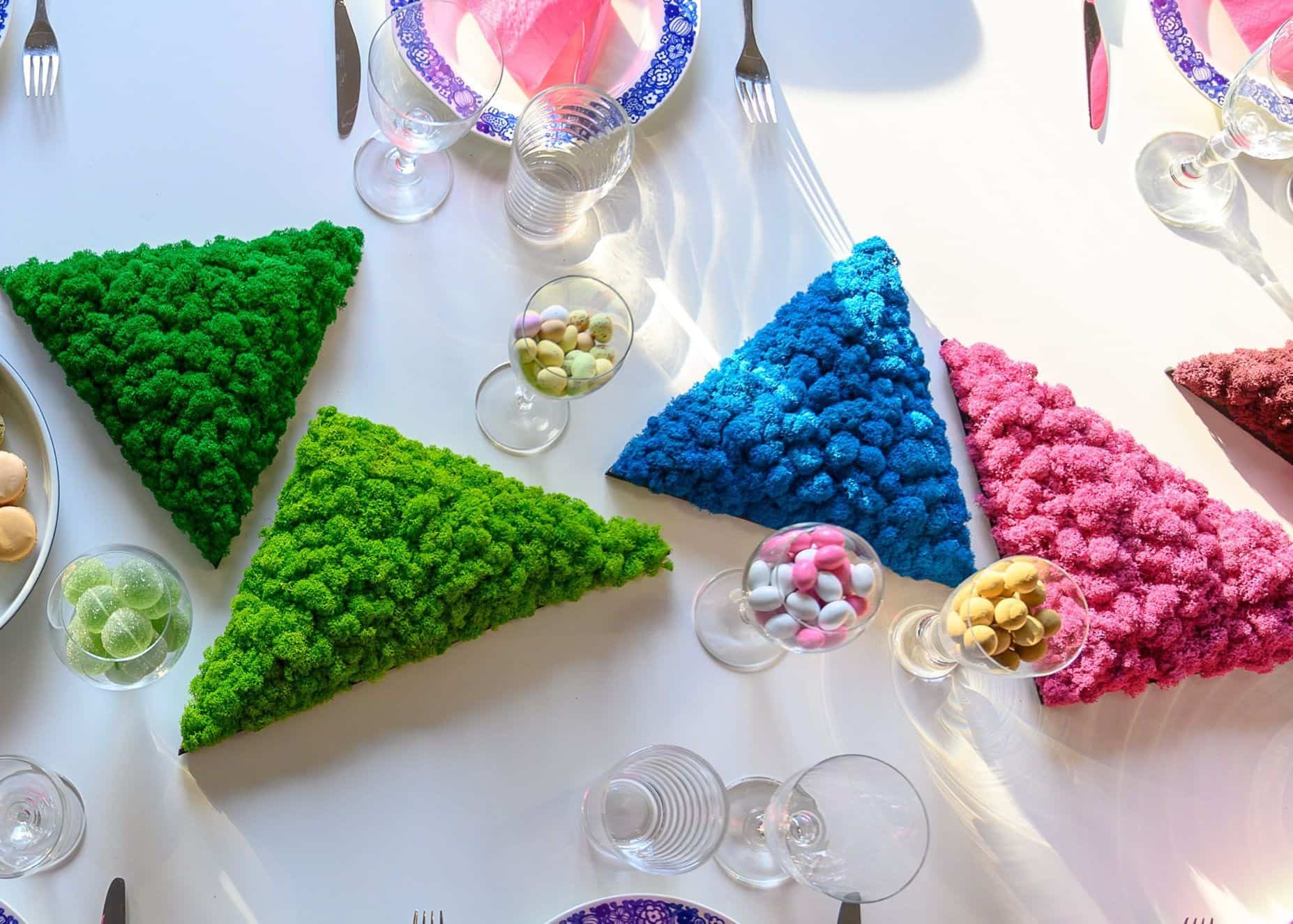Polarmoss creates design products from reindeer moss – IPR secures growth in Asia and America
28.01.2020January 28, 2020
Reindeer moss is the gold of Hailuoto. Polarmoss, a traditional moss company, is now transforming it into coloured interior decoration elements for the global design market. The journey of the design products from Hailuoto to the growth markets of Asia and America is secured by the protection of technical solutions and the brand.
It is not the first thing to come to mind that Hailuoto island in Finland in the Bothnian Bay, close to the Arctic Circle, is home to an international design hit: reindeer moss.
Originally known as an exporter of natural moss, Polarmoss understood the opportunities for processing moss some twenty years ago and stealthily started learning how to colour it. Fortunately so.
“When the trend for green walls emerged around the world about a decade ago, we were able to get in on the new green wall and interior decoration market quickly with our coloured moss products”, Polarmoss CEO Pauli Karvosenoja says while reminiscing about this major turning point in the business.
Now Polarmoss is known for its high-grade design products. More than half of the moss that the company still collects by hand is coloured, and it is exported to the world as processed end products, i.e. various interior decoration elements. Its naturalness, softness and northern exoticism make reindeer moss a desired interior decoration material.
“Today, a significant part of our turnover consists of interior decoration elements. With processed end products, our turnover has practically tripled in less than ten years”, Karvosenoja says.

Technical solutions protected with a utility model
The products have been developed heavily during the last seven years. There is a great deal of special expertise and inventiveness related to the moss colouring method, the interior decoration elements and especially their wall mounting. At Polarmoss, it was soon understood that inventions must also be protected.
From the early stages of the interior decoration products, European Patent Attorney Harri Antila from Kolster’s Oulu office has been helping Polarmoss evaluate which technical solutions can be protected and what is the appropriate form and degree of IP protection.
In the interior decoration elements, the fire-protected and coloured moss, which has been treated to maintain soft using a special method, is attached to a flexible felt base with a special adhesive compound and then to a wall using hook-and-loop Velcro tape. It is a unique entity within its own product sector. The invention has been protected with a utility model on the most important markets.
According to Harri Antila, the utility model is well-suited to protect a wide range of technical product enhancements, as well as being a cost-effective form of protection even for small companies that is worth considering alongside a patent.
“A utility model is a quick way to protect the results of product development. It provides a right to prohibit against direct product copying and also allows you to intervene in cases of infringement”, Antila describes the benefits of the utility model.
Polarmoss is widely known – special challenges for brand protection

Reindeer moss has been exported from Hailuoto to the world, especially to Central Europe, since the 1930s. Polarmoss’ main owner and Chair of the Board, Markku Sipola, is a third-generation moss entrepreneur.
Moss has traditionally been used in the florist industry in funeral wreaths and flower arrangements as well as for model railway trees and the scale models of architects.
Today, reindeer moss and its new uses are also widely known in Asia, where northern nature and exoticism are appreciated. As a result, the name Polarmoss has also become familiar.
“Other lichen species are very poorly known in Asia and, that being the case, Polarmoss has become a generic name for reindeer moss as its long-standing and largest supplier. Widespread recognition is naturally an advantage for us, but it also makes brand protection and trademark registration challenging”, Karvosenoja says.
The main function of a trademark is to distinguish the company’s products from those of its competitors. It should therefore not become part of standard language.
“A trademark loses its distinctiveness if it becomes a generic word, that is, if it is watered down. It is very difficult to register a word describing the product directly or a product name that has become a generic word as a trademark”, clarifies Kolster’s European Trademark and Design Attorney Hilkka Kerminen, who has helped Polarmoss tackle the situation and protect the brand in future growth markets.
Classifications, logo and distinctiveness are key

International protection of the brand is very important for Polarmoss, as coloured interior decoration products are now of interest worldwide. Polarmoss products are already exported to more than 40 countries.
“We have a lot of customers in North America and Asia, especially in Japan and South Korea. They are also the areas where we will be doing the most marketing in the future. It is also reflected in trademark protection”, says Karvosenoja.
Polarmoss has already registered a trademark consisting of the company’s name and figurative mark in the EU area. As a follow-up, trademark protection of the spearhead product, the POLARMOSS HEX® wall element, has been expanded to Asia and North America through the international registration system.
“It is important that the company has also registered the figurative mark, as the logo together with the word Polarmoss is a distinguishing element from competitors in a situation where the company’s name, the main brand, is in danger of being watered down to a generic name. The distinctiveness of a trademark can also be increased by adding other distinctive elements to the main brand, as has been done with the POLARMOSS HEX® product name”, Hilkka Kerminen says.
Correct and accurate classifications, which determine what is included in the scope of protection, are also particularly important when registering or renewing trademarks. Especially as the company expands into new product sectors and markets, it is important to go through the classifications of both new and existing trademark registrations. It is a good idea to use expert help for this, as companies typically stumble with the international trademark classification system.
“We used to handle trademark protection ourselves, so Kolster made sure that new trademark registrations will cover all of the products whose sales the protection is intended to accelerate and protect in the future as well. The classifications were specified and updated to meet our needs”, Karvosenoja says.
Interior decoration elements bring polar nature close to you
Polarmoss is a very strong international player in its own sector of specialty products.
“We are the only company in the world that has this entire processing chain under its control: moss collection as the foundation, colouring and our own interior decoration products”, Karvosenoja says.
The company sells natural moss, coloured moss and end products alike.
“Our vision is to distribute natural polar products to the global market, create a connection to nature for people who appreciate authentic materials also indoors, address them and make them pause and enjoy a nature experience.”
Lichen is a renewable but limited natural resource, so going forward, Polarmoss will carefully consider to which markets and at what price especially natural moss will be supplied.
“In China, for example, there would be a lot of demand for high-quality moss, but we do not want a situation where we supply a raw material that is cheaply processed and distributed as competitive products in the markets where we operate”, Karvosenoja describes the company’s cautious attitude towards the Chinese market.
According to him, the price level on the European interior decoration product market is already deteriorating, as various interior decoration elements made of natural materials have been available for a long time. Polarmoss is now seeking growth with its processed products on emerging markets of high purchasing power in Asia and America, where exotic natural materials and Nordic design are valued. In China, too, interest is arising for Polarmoss’ end products due to the interior decoration elements delivered to several office locations in the Shanghai area.
“There are still many aspects in the conquering of new markets and the international IPR protection of an expanding assortment of products that we will continue to consider. It is valuable for us to have protection professionals involved in these considerations.”

Want to discuss international protection for your technical innovation or brand? Contact our experts.
Harri Antila
harri.antila@kolster.fi
+358 40 546 4418
Hilkka Kerminen
hilkka.kerminen@kolster.fi
+358 40 632 6325
READ MORE
Make sure your trademarks are up-to-date
Protect the uniqueness of your company
An alternative to a patent – how to use design right and utility model protection effectively
